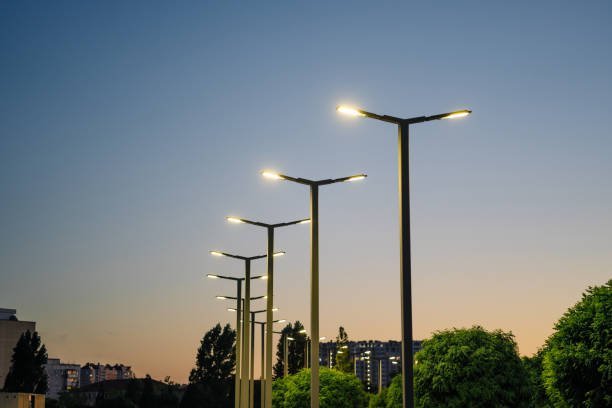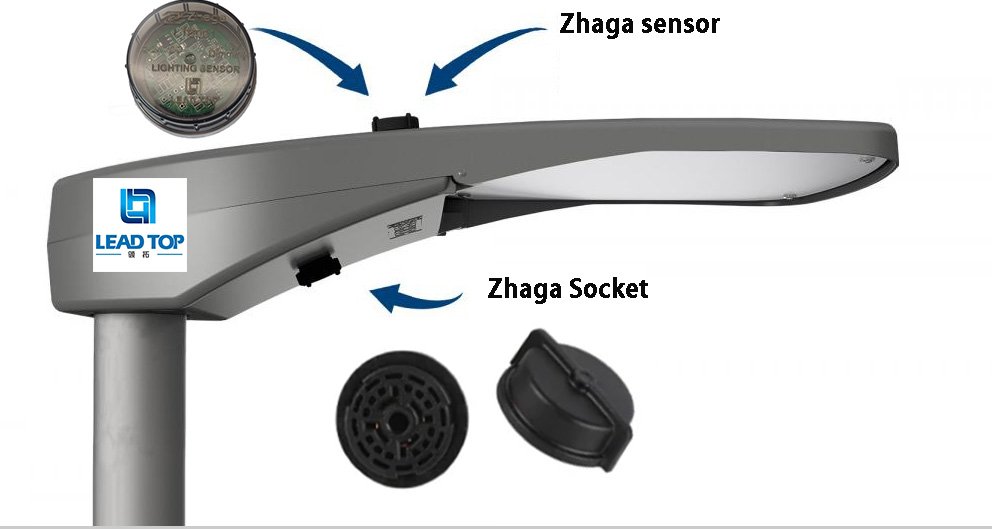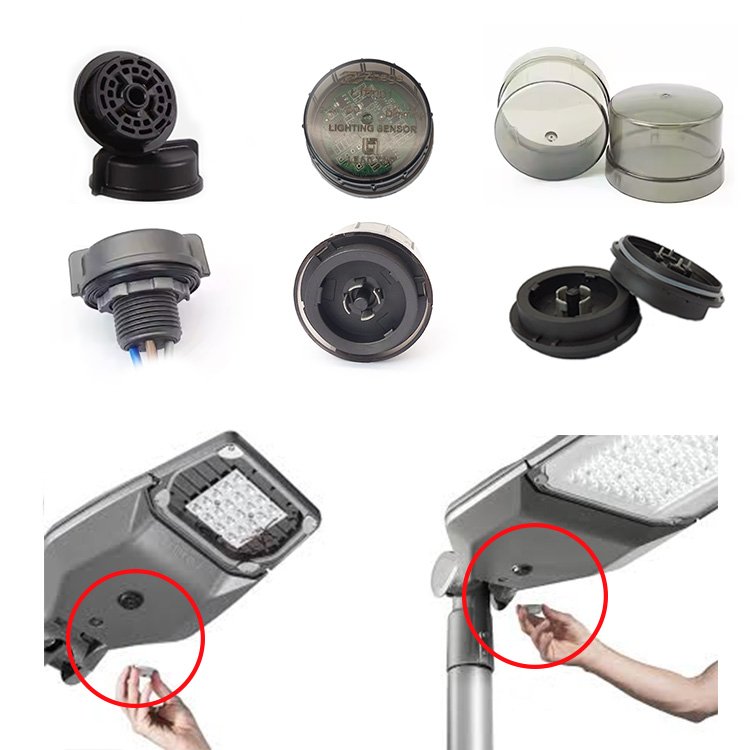Photocell sensors, also known as dusk-to-dawn sensors, have changed the way we manage reliable outdoor lighting, Rather than depending on manual switches or mechanical timers, these smart devices automatically turn lights on at dusk and off at dawn, This not only saves energy but also makes sure public and private spaces remain well-lit when needed, However, proper installation alone doesn’t confirm performance, to get consistent results, you must go through sensor testing steps after setup, Careful testing avoids problems like flickering, false triggers, or early failures issues that can quickly become costly if left unchecked.
In this guide, we’ll explain why testing matters, provide a step-by-step approach to test dusk-to-dawn sensor systems, discuss common problems, and show how to fine-tune for optimal operation.
Why Testing Your Sensor Matters
Even high-quality devices can malfunction if not tested right, the environment around the device plays a huge role in performance as surrounding lights, wiring quality, and lux sensitivity all affect how the sensor responds. Adding a photocell sensor troubleshooting phase after installation gives you peace of mind and prevents unnecessary maintenance, Regular testing also helps identify early wear-and-tear, environmental interference like dust or snow buildup, and issues with specific fixtures, by resolving these concerns during the testing stage, you extend the lifespan of your system and reduce costly repairs later.
Here’s why testing is crucial:
- Preventing Flickering
Incorrect lux settings or misalignment can cause your lights to flicker, turning on and off repeatedly and Testing identifies this problem before it becomes disruptive
- Ensuring Safety
Outdoor lights are mostly part of public infrastructure like streetlights and parking lots. A malfunctioning sensor could result in dark zones and safety hazards, Testing ensures the system performs reliably under real conditions
- Maximizing Energy Efficiency
A sensor that activates too early wastes electricity, on the other hand, the one that turns off too late creates gaps in coverage so through outdoor light calibration, you can fine-tune performance for maximum savings
In short, testing your photocell is the bridge between installation and dependable real-world operation.

Step-by-Step Guide to Testing Your Sensor
Testing is a hands-on process that simulates day and night cycles, allowing you confirm how your датчик от заката до рассвета behaves, Below are the recommended sensor testing steps:
Step 1: Cover the Sensor to Simulate Darkness
Take a dark cloth, cardboard, or even your hand and cover the фотоэлемент. By blocking light, you simulate nighttime conditions. The sensor should trigger the light within its programmed time delay.
- Expected result: The light turns on smoothly without delay longer than specified
- Troubleshooting tip: If it doesn’t turn on then test the wiring and make sure that the sensor is rated for your fixture.
Step 2: Observe Light Activation
Once covered, watch the light as it switches on as this helps confirm proper wiring and that the sensor is receiving power, because smooth activation is key here:
- If the light flickers, you may need photocell sensor troubleshooting to check connections.
- If no response occurs, ensure compatibility between the sensor and the fixture.
This stage is also an early form of outdoor light calibration, confirming that the sensor is functional.
Step 3: Remove Cover and Confirm Shut-Off
After a few seconds, remove the cover, the light should turn off once natural light hits the sensor:
- Expected result: A clean shut-off without hesitation
- Purpose: This makes sure that your sensor is reacting to surrounding light correctly
If the shut-off is not on time or doesn’t happen at all then revisit lux settings.
Step 4: Adjust Lux Sensitivity if Needed
Lux informs how sensitive the photocell is to brightness, If the light turns on too early or too late when it’s already dark, adjust the lux threshold:
- Most sensors have a screw or digital setting for lux adjustment
- Fine-tuning makes sure the light responds to real-world light conditions
Correct outdoor light calibration makes sure that your sensor balances safety with energy efficiency.
Step 5: Fine-Tune Time Delay
Time delay prevents nuisance switching caused by brief changes in light, such as headlights, shadows, or passing clouds:
- Recommended delay: 3–10 seconds.
- Too short = flickering.
- Too long = delayed activation.
This final adjustment step stabilizes performance and avoids false triggers. Proper delays make your outdoor system both responsive and reliable.
Common Issues During Testing and Fixes
Even with careful installation, you may encounter issues, Here are the most frequent ones and their solutions:
- Light doesn’t turn on/off: Verify wiring connections, power supply, and sensor type
- Flickering: Adjust orientation or time delay to prevent false triggers
- Wrong orientation: Make sure the sensor faces the correct direction, away from the light it controls.
| Проблема | Possible Cause | Решение |
| Light doesn’t turn on/off | Wiring error or wrong sensor type | Verify power supply, wiring connections, and confirm sensor compatibility |
| Flickering | Misaligned sensor or short time delay | Adjust orientation and increase delay to reduce false triggers |
| Wrong orientation | Sensor faces its own light source | Reposition sensor away from the controlled fixture |
| Delayed shut-off | Люкс threshold too high | Lower the lux sensitivity setting |
| Early activation | Lux threshold too low | Increase lux setting according to manufacturer guidelines |
This troubleshooting table simplifies the most common problems found during photocell sensor troubleshooting and provides actionable fixes, it is a quick reference for installers or even homeowners, helping them find issues at a glance and apply the right adjustments without guesswork, by following these, you can reduce downtime and make sure your lighting system continues to deliver consistent performance.

Заключение / призыв к действию
Testing your photocell immediately after installation isn’t just a technical formality, it’s a safeguard for reliable outdoor lighting. A properly tested dusk-to-dawn sensor:
- Prevents flickering
- Responds accurately to light levels
- Optimizes energy use
- Ensures safety in public and private spaces
В Свинцовый-Топ, our photocell sensors are pre-calibrated, with adjustable lux and time-delay settings that make testing easier. Whether you’re installing lights for city streets, parking areas, or campus pathways, our sensors simplify sensor testing steps, reduce maintenance needs, and support long-term energy savings.
Ready to ensure your outdoor lighting works flawlessly? Contact Lead-Top for expert advice and high-performance sensors designed for smooth installation, easy testing, and dependable operation.
Ссылки:







